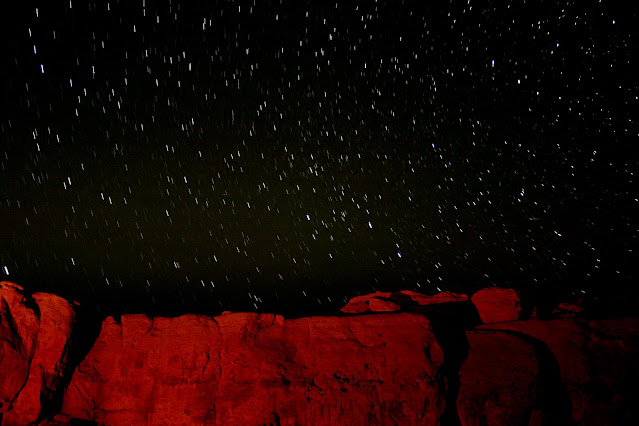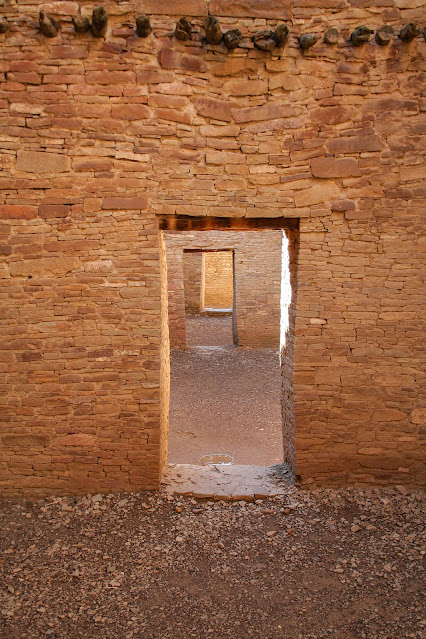When I look up at the cloudless night sky, I’m often reminded of an experience Rhonda and I had during the autumnal equinox of 2006.
It all began when I heard about the Chaco Canyon Supernova Petroglyph, believed to depict the 1054 supernova that created the Crab Nebula - truly prehistoric astrophotography at its finest. Way back in the 1980s, having never seen the petroglyph, I bought a pendant depicting it during one of my first trips to the desert Southwest.
 |
My Supernova Pendant
|
Back then, my two obsessions were stargazing and exploring the Southwest, so the pendant felt like a perfect symbol. I made a deal with myself: I’d wear it until I figured out how to move out here. And once I did, I promised I’d visit that very petroglyph.
Fast forward to 2006. We’d been living in the Southwest for eight years and finally made our pilgrimage to Chaco Canyon, which is located in New Mexico. Note that Chaco is remote - there are no nearby hotels, no stores, no distractions for 100 miles - just endless silence and thousand-year-old ruins. That evening, we set up camp, made dinner, and watched the sun melt into the western horizon. Our first evening there was shaping up to be one of those rare, spiritual nights.
Then came… the rumble.
At first, it was subtle. Could’ve been distant thunder. But then came the dust cloud. And then the actual source: a school bus barreling straight for us like it had been summoned by an ancient curse - or maybe a field trip permission slip.
The bus screeched to a halt near our campsite. The door swung open with a hiss. Out poured a herd of hyperactive children who’d clearly been trapped inside that thing for hours and were now making up for lost time by unleashing all their pent-up energy into the formerly tranquil canyon.
That’s when it hit us: we had unintentionally timed our sacred journey with the autumnal equinox - a popular date for school trips, celebrations, and apparently, chaos.
The next day, we finally hiked out to the Supernova Petroglyph. It was every bit as powerful and mysterious as I had imagined. I stood there wearing my pendant, taking in the moment, grateful that I had followed through on a promise I made to myself years earlier.
And yet, like most pilgrimages, it didn’t go quite as planned - which is probably the point. Because no matter how meaningful the destination, life always finds a way to throw in something unexpected. Sometimes it’s a spiritual epiphany. Sometimes it’s 30 sugar-charged children with no volume control.
Either way, it’s always a trip worth taking.
 |
| Casa Rinconada |
 |
| We climbed to the top of an adjacent mesa to get a good view of Pueblo Bonito in its entirety. |
 |
| Pueblo Bonito |
 |
| Pueblo Bonito is the crown jewel of New Mexico’s Chaco Canyon - one of the most intensively studied archaeological sites in the Southwest. Amazingly, visitors today can still wander through its original rooms, walking in the footsteps of those who built it over a thousand years ago. Constructed in stages between AD 850 and 1150, this massive complex was the ceremonial and cultural heart of the Chacoan world. At its peak, that world stretched across the San Juan Basin and into modern-day Colorado, Utah, and Arizona, uniting a vast network of communities for more than 300 years. |
 |
|
 |
|
 |
|
 |
|
 |
|
 |
|
 |
|
 |
|
 |
|
 |
|
 |
| This pictograph near Peñasco Blanco in Chaco Canyon may depict the supernova of July 4, 1054 A.D., which created the Crab Nebula in the constellation Taurus. The panel, located on an overhang nearly 20 feet above the ground, features a star (the supernova), a crescent moon, and a life-sized handprint - a symbol believed to indicate a sacred site. Astronomical calculations confirm that, just before dawn the waning moon appeared within 3 degrees of the newly formed supernova, matching the alignment shown in the pictograph. The supernova was so bright it was visible in daylight for 23 days and at night for nearly two years, with records of the event found in China and Japan. (An empty cliff swallow nest is visible on the left side of this photo.) |


























































































Comments
Post a Comment